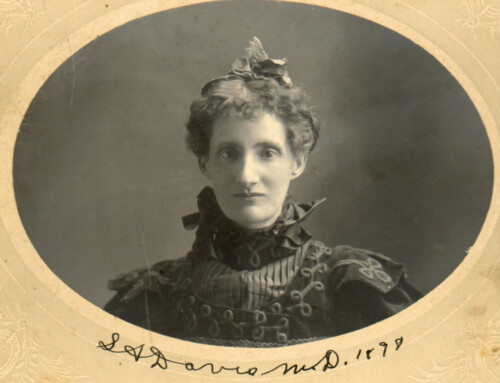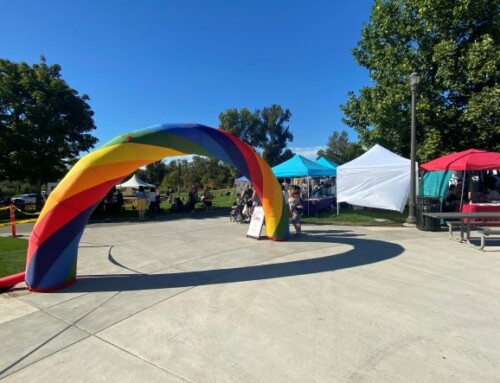Salem Area Mass Transit District (1979-2001)
In 1979, the Oregon Legislature passed Senate Bill 462, and the Governor signed it into law on July 27th of that year. The bill provided a procedure through which the voters could create transit districts. Such a district could have an outer boundary no greater than the Urban Growth Boundary of a city as of January 1, 1977. Chapter 267 of Oregon Revised Statutes defined the rules governing formation and operation of such a District.
By a 3 to 1 ratio, the voters within the Salem Urban Growth Boundary approved a ballot measure on November 6, 1979, creating the Salem Area Mass Transit District. The newly-formed District had a resident population of approximately 120,000 (in 2000 it is 199,000), and encompassed the City of Salem and unincorporated areas of Marion and Polk Counties. At this same election, 5 of the 9-member Board of Directors were also elected. Subsequently, pursuant to the statute, the Salem City Council appointed 2 Directors from its membership and the Marion and Polk Boards of Commissioners each appointed 1 Commissioner to the Board.
On February 17, 1981, after one failed levy attempt, the District voters passed their first property tax levy. The one-year operating levy of $2,135,810 would provide funds for the operation of an area-wide bus system beginning July 1, 1981. The area was formerly served by the City of Salem bus system within the City Limits and by contract with two Special Service Districts serving areas outside the City Limits to the north and east.
Effective July 1, 1981, the District entered into a one-year contract with the City of Salem for the operation of the District’s bus system pursuant to policies, routes, and programs set by the Board of Directors of the District. In October 1981, the first General Manager, Gordon Aoyagi, was hired. Mr. Aoyagi came to the District from a post as director of a para-transit service in Westport, Connecticut. He left in October 1985 to become Chief of the Division of Transit Services in Rockville, Maryland.
Following approval of a $2,238,285 one-year operating levy on June 29, 1982, the District accepted transfer of City of Salem personnel and equipment and, on July 1, 1982, began direct operation of the area-wide bus system.
The City of Salem had operated the system under the name “Cherriots.” This name had been selected from entries in a contest sponsored by the City when they bought the system from the private owners in 1966. The name reflected a combination of the importance of cherry orchards to the Salem identity and economy (Salem was once known as “The Cherry City”), and a play on the word “chariots.” Because of the widespread acceptance and popularity of the name, the District chose to retain the “Cherriots” name and logo for its own operations.
District voters continued their support of the Cherriots. On March 29, 1983, a two-year operating levy of $4,587,934 provided operating funds for the 1983/84 and 1984/85 fiscal years. On June 25, 1985, a one-year operating levy of $1,300,874 was approved for FY 1985/86. In a show of community-wide support for the system, a tax base levy of $1,498,000 was passed on May 20, 1986.
In January 1986, the District’s second General Manager, Mr. Albert R. Hampton, was hired. Mr. Hampton had been the first, and only Transit Superintendent of the City of Salem’s Cherriots system beginning in 1966, and had previously served the Transit District as Transit Services Manager. Mr. Hampton retired in July 1991, capping 25 years of transit service in Salem. He passed away on October 4, 1997 at the age of 71.
The District was redistricted by the Secretary of State in January 1986, into seven subdistricts instead of the previous five. The redistricting was ordered by the 1985 Legislature in a change to ORS 267 to allow all members of the Board of Directors to be elected by the voters of the District, rather than a mix of elected and appointed positions. The seven-member Board of Directors took office on July 1, 1987.
Since the formation of the District in 1979, the staff and the Board of Directors have focused upon improving the physical condition of the aging transit fleet, maximizing productivity and efficiency of the service delivered, and developing a funding base for the District with a mixture of local, state and federal funding. In July, 1988, the District consolidated its administration, operations and maintenance activities on an 8.4 acre facility acquired and constructed with a combination of local, state and federal funds. U.S. Senator Mark Hatfield and Governor Neil Goldschmidt officiated at the open house on April 27, 1989. A permanent transfer station and administrative office, Courthouse Square, is currently under construction; and future projects under consideration include expanded service.
The District’s third General Manager, Gregory E. Cook, was hired in July 1991. Mr. Cook had previously managed transit properties in Gainesville, Florida, and Mobile, Alabama.
In October of 1991, the first major service change since the District began operation of the system in 1982 was implemented to improve service reliability and the level of service in some areas. This change involved virtually every route and included adding one route and increasing frequency on several others.
With a decline in revenues due to the impacts of 1990’s Ballot Measure 5 (property tax limitation) and the resulting loss of State matching revenues, the District began facing serious cash-flow problems and using capital improvement reserves to pay for day-to-day operations. The threat of possible cutbacks in services within two years prompted an aggressive legislative strategy in the 1993 Legislature to find additional revenues. On September 10, 1993 the Governor signed House Bill 3654 into law (Chapter 809 1993 Oregon Laws). The bill eliminated matching limitation requirements on the State’s In-Lieu Payroll Tax revenue to the District letting the District receive the full amount available from the Mass Transit Assessment Program established by the 1981 Legislature. The Bill generated an additional $2.4 million over a two-year period. The law, applying only to Salem expired in 1995.
Further, amendments to HB 3654 mandated that, “the District, by July 1, 1994 place on the ballot for approval by the electors of the District a measure to impose a payroll tax ….” Meeting that provision, on September 21, 1993 the District voters were presented with Ballot Measure 24-2 to establish an employer-paid payroll tax of not more than six-tenths of one percent ($6 per $1000) of payroll to maintain service and develop night and weekend service. The measure was defeated by a wide margin of more than 2 to 1 with the business community in strong opposition.
Early in the 1995 Legislative Session, SB 1020 was introduced to continue conditions of the expiring 1993 law (HB 3654). The Bill passed, and generated about $300,000 more in 1995 and $200,000 in 1996.
On October 5, 1993, James Clark, who at that time was the Board’s longest tenured member at over ten years and longest tenured President of the Board at over six years, suffered a massive heart attack and died in New Orleans, Louisiana while attending the annual conference of the American Public Transit Association with other Board members and staff. As a memorial in recognition of his dedication to transit, on December 16, 1993 the Board of Directors adopted Resolution #93-29 formally dedicating and naming the District’s Board Room the James E. Clark Memorial Board Room in his honor. A dedication plaque and framed color photo were mounted in an appropriate place memorializing him.
In an effort to stop the continuing utilization of capital replacement funds earmarked for new buses and the proposed transit transfer point for operating costs, the electorate was presented with Ballot Measure 24-17 in the March 17, 1994 Primary Election to increase the District’s property tax base by $1.5 million to maintain the existing level-of-service. The measure was the result of a 5-Year Tax Management Plan proposed by then Mayor R. G. Andersen-Wyckoff in coordination with non-school taxing entities affected by 1990’s Measure 5 property tax limit who agreed not to seek new tax bases in the next five years, and instead to support the Transit District’s increase.
Although supported by major business groups and all local governments with no declared opposition, the Measure failed with 44% of the vote.Immediately after the election, the Board began deliberations on fare increases and service cuts. Effective July 1, 1994, the downtown free zone and all other free services were discontinued. Corporate sponsorship of previously free services at an hourly rate became effective for the Art Fair and State Fair shuttles. Effective September 1, 1994 all fares were increased, the free fare zone was eliminated, and service reductions were made in the Turner Road area and on the Jan Ree route.
Facing a continued shortfall of funds, a one-year $1.5 million levy to continue current operations was submitted to the electorate (Ballot Measure 24-40) on May 16, 1995. With no publicly declared opposition, the levy passed with 57% of the vote.
On May 25, 1995 Greg Cook, the District’s third General Manager, resigned his position to assume the position of Executive Director of the Ann Arbor Transit Authority in Ann Arbor, Michigan. Denny Moore, who had served as the Intergovernmental Relations Representative for the District and was previously Administrator of the Oregon Public Transit Division, was appointed General Manager Pro Tempore until the hiring of a new General Manager.
On September 1, 1995 R. G. Andersen-Wyckoff, former Salem Mayor, was hired as the District’s fourth General Manager. Mr. Andersen-Wyckoff served consecutive two-year terms as Salem Mayor beginning in January 1991.In the continuing effort to stabilize the District’s financial situation, Ballot Measure 24-68 was presented to the electorate on May 21, 1996 in the form of the first increase to the existing property tax base in ten years, from $2.2 million to $5.9 million. With strong business and community support, the measure passed by a 55% margin and was expected to maintain current bus services, phase in express park-and-ride service, expand evening service to approximately 9:30 pm., and provide more frequent buses on major arterial streets in Salem and Keizer. Funds were also earmarked to implement the Americans with Disabilities Act (ADA) paratransit services in accordance with federal law which mandates full compliance by January 26, 1997.
The key element in the success of the election was the development of the Ten Year Plan (TYP), a 10-year rolling financial plan which allowed the District to collect the maximum allowable in taxes and place the surplus into an operating reserve for later years. This plan not only demonstrated to the business community that the District was being fiscally responsible but it allowed the Board and staff to visually see the effects of under-spending or over-spending current budgets and the effect of adding new services.With passage of Measure 47 (Property Tax Limitation Cut and Cap) in November 1996 and the amended version, Measure 50, in May 1997 and the resulting reduction in property tax revenues, it was not possible to implement all new services as planned. The Board made a decision to implement night service and corridor improvements only, and the District’s first night service began operating on December 2, 1996 with the last bus leaving downtown at 9:35 p.m. The effects of Measures 47/50, though reducing the amount of property tax revenues for operations, were minimized because of the TYP.
Other local governments were forced to reduce services and staff but, because the District was not spending what it was collecting, the effects were spread out over the TYP thus allowing the District to make adjustments in proposed new services rather than reduce current level of service and employees.The addition of night service and corridor improvements increased the number of District employees from 124 to 148 and immediately added 2000 trips per day.In keeping with the District’s forward movement, a new and more futuristic looking logo was introduced for all District materials.
In November 1995, the District introduced a proposed project, Courthouse Square, on the Senator Hotel block, downtown, as a joint project with Marion County to provide the County with a centralized County Service Center and to replace the District’s current transit transfer facility on High Street and move its administrative offices into downtown. The $30 million project is scheduled for completion in the summer of 2000. The transit portion of the project is $9.844 million of which $7.675 million is from federal (FTA) grants.
On January 2, 1997, the District began operation of its Americans with Disabilities Act (ADA) paratransit program, under contract with Oregon Housing and Associated Services (OHAS). The service is similar to the “Wheels” program operated by OHAS which has provided van trips for seniors and disabled persons for the past 15 years.The 1997 State legislature approved HB 2110 which brought the District an additional $300,000 in revenue annually through the provision that State employees funded by federal funds would now be included in the formula for determining the in-lieu fees paid to transit districts.
In 1997 the District set ridership records in almost every category: Highest nighttime ridership, 1,897; Highest single day ridership, 15,459; Highest Saturday ridership, 11,272; Highest monthly ridership, 349,346; and, Highest annual ridership, 3,857,674. Each quarter’s ridership in 1997 was higher than the same quarter in the previous year with the growth of 20.58%, 21.13%, 26.24%, and, 19.72%, respectively. The third quarter was the largest ridership percentage growth of any transit agency in the United States, according to Passenger Transport magazine, published by the American Public Transit Association.In October 1997, the District Board and management staff began a strategic planning process designed to produce a Strategic Business Plan for the District.
This plan will encompass the Property Tax Management Plan, the Ten Year Plan, a Capital Improvement Plan, a Service Plan, and a system and strategic evaluation process. It was scheduled to be completed by July 1999, but has been delayed due to unforeseen circumstances.In the summer of 1998 the District accepted delivery of eight new low-floor, compressed natural gas (CNG) buses and first implemented them in the State Fair Shuttle service in September. Congresswoman Darlene Hooley was present on December 1, 1998 for the dedication of the new CNG fueling station at the District’s Operating Base.
On December 7, 1998 the District assumed operation of the State park-and-ride shuttle by adding Route 20 (State Motor Pool), which provides service between the State Motor Pool on Airport Road and the Capitol Mall area.On February 19, 1999 R. G. Andersen-Wyckoff resigned his position to take a job as General Manager of the Recreation Centers of Sun City West, Inc. in Sun City West, Arizona. On February 25, 1999 the Board of Directors appointed Tom Wolfgram, Business Services Manager, to serve as General Manager Pro Tempore until a new General Manager was hired.
The 1999 State Legislature approved Senate Bill 655, which allows the District’s service boundaries to conform to the Urban Growth Boundary as it changes. The Governor signed Senate Bill 655 into law effective October 23, 1999 (Chapter 454 1999 Oregon Laws).The District’s fifth General Manager, Jeffrey Hamm, was hired on August 16, 1999. Mr. Hamm had managed a transit property in Port Townsend, Washington for nine of the 20 years he had been in the transit industry. Previously, he worked as a Supervisor for Seattle Metro in their Research and Market Strategy Division and the Commuter Pool Division and as a Planning and Development Specialist for the City of Seattle’s Engineering Department.
On September 7, 1999 the District implemented two new routes–Turner Road (Route 21), and Battlecreek (Route 22); and on December 6, 1999 two express park-and-ride routes, South Commercial and Market Street, were begun. These additions, planned West Salem service improvements, and a new Oregon Medical Assistance Program (OMAP) regional Medicaid brokerage in 2000-01 will increase the number of District employees to 202.
The District operates a fleet of 67 buses, all of which are 1980 or newer models. Routes are 100% accessible to disabled persons during non-peak hours, and at least one bus each hour during the peak period is lift-equipped. Since 1989 all new buses ordered were accessible. In March of 1994, bicycle racks with a two-bike capacity were installed on the fronts of all buses making the Cherriots completely accessible to bicycles, and among the first in the nation on track to have its entire fleet of buses accessible to commuters with bicycles.
The system now provides bus service on 24 routes throughout the service area, with standardized fares. It serves a population of 199,000 residents in two cities, Salem and Keizer, as well as unincorporated areas of Marion and Polk Counties. Ridership has shown a steady increase over the past several years. In December 1999 the 4 million annual ridership mark was passed, the highest in the District’s history. Buses serve some of the Middle Schools and all Senior High Schools, YMCA, YWCA, major hospitals and state institutions and major shopping areas. Ridership on the District’s Americans with Disabilities Act (ADA) complementary paratransit service increased by 20%. Over 4,000 door-to-door dial-a-ride trips are now provided per month to people with disabilities in the Salem-Keizer area.
A dedication ceremony for Courthouse Square was held on September 29, 2000. Dignitaries present included former U.S. Senator Mark Hatfield who acquired the federal funding for the transit portion of the project. Bus operations at the on-street transfer facility on High Street ceased at the end of the day on Saturday, September 30, 2000, and began at the new R. G. Andersen-Wyckoff Transit Mall on Monday, October 2, 2000. The first phase move of employees from the Customer Service, Operations Supervisors, and Security Offices at 183 High Street to the first floor of Courthouse Square coincided with the beginning of bus operations there. The second phase move of administrative employees from 3140 Del Webb Avenue to the new fifth floor offices at Courthouse Square was made the week prior to the opening of business there on Monday, November 6, 2000.
Researched and written by Courlette Hiscocks, Salem Area Transit
Bibliography:
Salem Area Mass Transit District, A Brief History. Courlette Hiscocks. July 2000.
This article originally appeared on the original Salem Online History site and has not been updated since 2006.







Leave A Comment